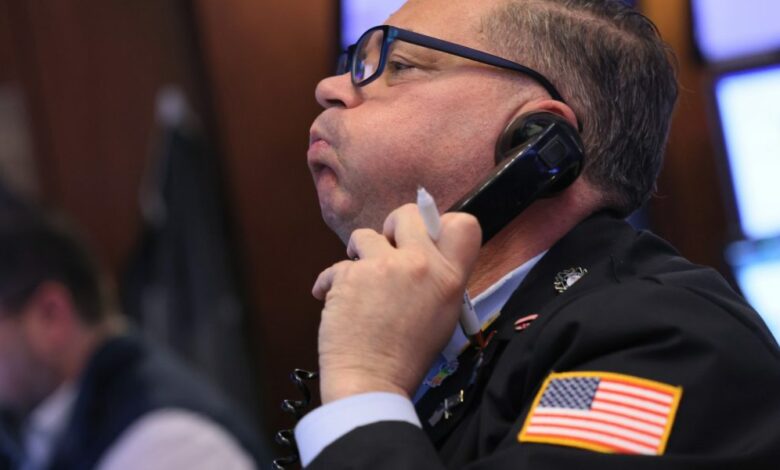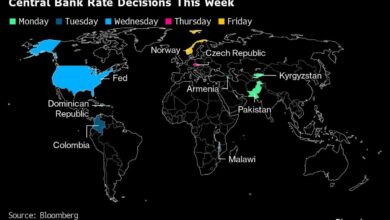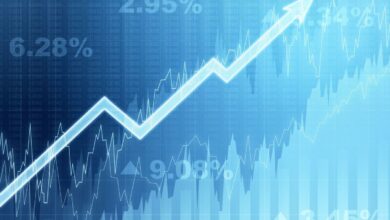The economy just got a one-two punch of bad data


The mighty American consumer has shrugged off months, even years of recession predictions from top economists and Wall Street CEOs. Facing the hottest inflation in 40 years, and aggressive interest rate hikes meant to tame it, consumers have managed to continue spending, enabling the economy to remain on solid footing. But this week, a one-two punch of bad economic data has some experts waiting for another uppercut.
The second straight weak retail sales report, which included a downward revision of January’s sales data, has sparked concerns that consumers are finally showing signs of wear and tear after powering through price increases and rising borrowing costs for roughly two years. “While last month’s retail sales miss was chalked up to weather, this month’s weakness suggests that perhaps the consumer is not as healthy as expected,” Damian McIntyre, portfolio manager at Federated Hermes, told Fortune in emailed comments.
At the same time, producer price inflation, which tends to lead consumer price inflation, also came in above Wall Street’s expectations for the second straight month on Thursday. It’s another piece of data that could put investors’ dreams of swift, economy-boosting interest rate cuts on hold, particularly with Fed officials being very clear that they don’t plan on cutting rates until inflation is well under control. As Quincy Krosby, chief global strategist for LPL Financial, put it: “For the data dependent Fed, this report isn’t helpful.”
The latest retail sales and producer price inflation reports aren’t dire news for the economy in their own right—retail sales are far from outright collapsing, and producer price inflation isn’t soaring—but the new trends seen in them are concerning. If businesses continue to see price hikes, they’ll likely pass those on to already inflation-weary consumers. That could put a stopper on consumers’ aggressive spending, which has helped prevent a U.S. recession so far.
The Jab: Rising Producer Prices
The quick jab that hit the economy first on Thursday was an elevated producer price inflation reading. The producer price index (PPI), which measures the change in the prices domestic sellers pay, rose 0.6% last month, the Labor Department’s Bureau of Labor Statistics reported Thursday. That was compared to economists’ consensus forecast for 0.3%.
Year-over-year, producer prices also jumped 1.6% in February. That’s well below the 4.7% year-over-year rise in producer prices seen in February 2023, when inflation was still at 6%, but once again it’s the trend that’s concerning. After sticking at or below 1.1% since October, including just 1% in January, February’s PPI inflation data is a step in the wrong direction.
Producers’ inflation was largely driven by a 4.4% spike in energy prices in February that caused overall goods prices to rise. Falling goods inflation has been one of the keys to the drop in overall U.S. inflation over the past year, but for Citi economist Veronica Clark, the PPI report is evidence that “the disinflation in goods prices is largely coming to an end.”
The end of goods disinflation is apt to put interest rate cuts, which many investors were expecting to see this month not long ago, on hold unless upcoming consumer price inflation reports prove more favorable. “Overall…this likely continues to provide support for the Fed remaining on pause for the next few meetings,” Rob Swanke, senior equity strategist for Commonwealth Financial Network, said.
The Cross: Weak Retail Sales
After being touched up by a producer price index jab, the economy was hit with a serious right cross from a weaker-than-expected retail sales report.
Retail sales rose just 0.6% month-over-month and 1.5% from a year ago in February, the Census Bureau reported Thursday. That’s compared to economists’ consensus forecast for an 0.8% monthly rise in sales. Even with rising gas prices and car dealer incentives driving more spending, the data shows consumers are beginning to rein in their budgets.
“The 1.5% year-over-year gain is minimal and less than half of the headline CPI number. In other words, retail sales are lagging inflation,” Ted Rossman, senior industry analyst at Bankrate, told reporters in emailed comments Thursday. “It’s a slow-growth economy for retailers, with only e-commerce shops and bars and restaurants posting annual growth figures above the overall rate of inflation.”
On top of the slower than forecast February data, last month’s year-over-year sales figures were revised down from negative 0.8% to negative 1.1%. That marks the fourth consecutive month previous producer inflation data was revised lower.
Jeffrey Roach, chief economist at LPL Financial, told Fortune via email that the “consistent downward revisions should tell us the economy is slowing,” even if the consumer still has some capacity to spend with the unemployment rate remaining low.
What should investors fearing a knockout follow-up punch to the latest one-two be looking for? Credit card delinquencies are one area of concern, with credit card debt reaching a record high this year. But Roach had another idea: “A helpful indicator to watch in the coming months is auto sales. If the economy is truly slowing, expect to see vehicle inventories swell and dealers offer more incentives,” he said.
Source link




